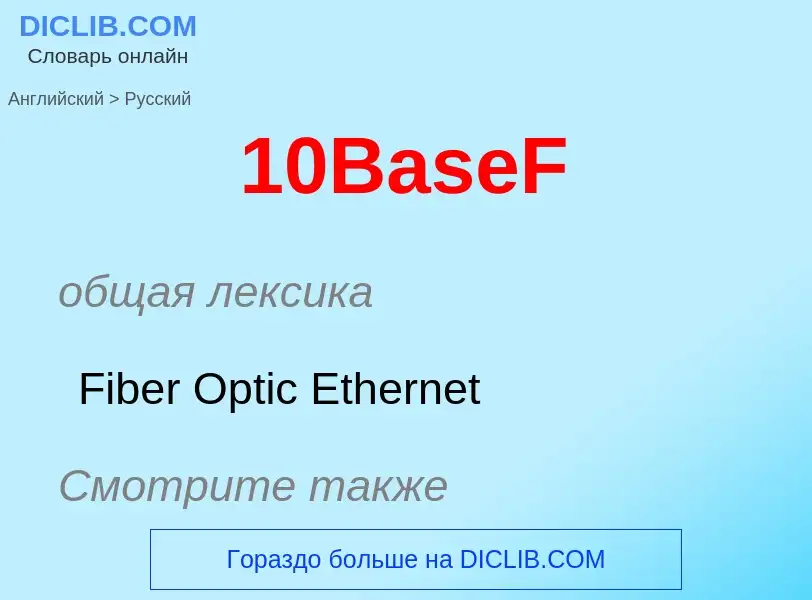Tradução e análise de palavras por inteligência artificial
Nesta página você pode obter uma análise detalhada de uma palavra ou frase, produzida usando a melhor tecnologia de inteligência artificial até o momento:
- como a palavra é usada
- frequência de uso
- é usado com mais frequência na fala oral ou escrita
- opções de tradução de palavras
- exemplos de uso (várias frases com tradução)
- etimologia
10BaseF - tradução para russo
Wikipédia

The physical-layer specifications of the Ethernet family of computer network standards are published by the Institute of Electrical and Electronics Engineers (IEEE), which defines the electrical or optical properties and the transfer speed of the physical connection between a device and the network or between network devices. It is complemented by the MAC layer and the logical link layer.
The Ethernet physical layer has evolved over its existence starting in 1980 and encompasses multiple physical media interfaces and several orders of magnitude of speed from 1 Mbit/s to 400 Gbit/s. The physical medium ranges from bulky coaxial cable to twisted pair and optical fiber with a standardized reach of up to 80 km. In general, network protocol stack software will work similarly on all physical layers.
Many Ethernet adapters and switch ports support multiple speeds by using autonegotiation to set the speed and duplex for the best values supported by both connected devices. If autonegotiation fails, some multiple-speed devices sense the speed used by their partner, but this may result in a duplex mismatch. With rare exceptions, a 100BASE-TX port (10/100) also supports 10BASE-T while a 1000BASE-T port (10/100/1000) also supports 10BASE-T and 100BASE-TX. Most 10GBASE-T ports also support 1000BASE-T, some even 100BASE-TX or 10BASE-T. While autonegotiation can practically be relied on for Ethernet over twisted pair, few optical-fiber ports support multiple speeds. In any case, even multi-rate fiber interfaces only support a single wavelength (e.g. 850 nm for 1000BASE-SX or 10GBASE-SR).
10 Gigabit Ethernet was already used in both enterprise and carrier networks by 2007, with 40 Gbit/s and 100 Gigabit Ethernet ratified. In 2017, the fastest additions to the Ethernet family were 200 and 400 Gbit/s. Development of 800 Gbit/s and 1.6 Tbit/s Ethernet standards started in 2021.


